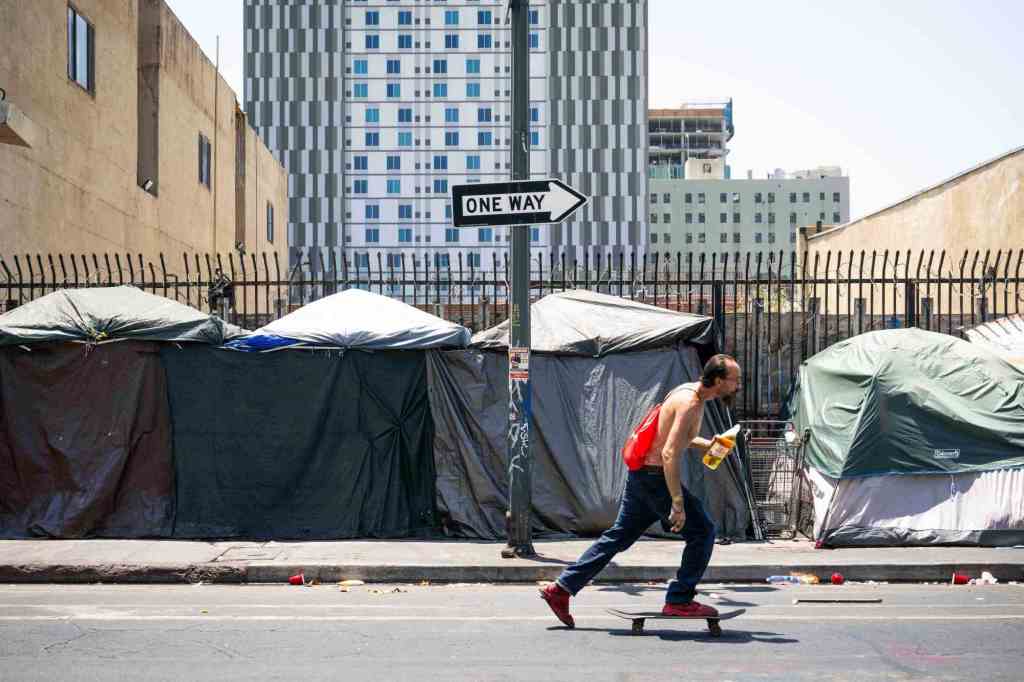Last week, the L.A. City Council voted to study the feasibility of forming its own, separate bureaucracy to spend money on homelessness.
This follows L.A. County’s decision to form its own, separate bureaucracy to spend money on homelessness.
It’s uncertain where this leaves the Los Angeles Homeless Services Authority, a joint city-county bureaucracy to spend money on homelessness.
These bureaucracies are known as a “Continuum of Care,” entities that may apply for federal grants from the U.S. Department of Housing and Urban Development. At the moment, LAHSA is the lead agency for the Los Angeles Continuum of Care (CoC). LAHSA is supposed to coordinate all the aid for homelessness that comes from agencies, businesses, community groups and government.
But in case you hadn’t noticed, it’s not going well. A long string of reports and audits have found that the much of the money has vanished with no record of what services were provided or how many people were helped.
What has LAHSA been doing with its time? The agenda of a September 10 meeting of LAHSA’s Los Angeles Continuum of Care Board announces right in the letterhead that it drives “the collaborative strategic vision to create solutions for the crisis of homelessness.” Then the meeting opened with a “land acknowledgment” that blamed the problem on colonialism.
“We acknowledge that homelessness did not exist before colonization of this land, genocide, and governmental policies of erasure and land and wealth dispossession,” the board solemnly noted.
In fact, the events that caused the crisis known as homelessness are considerably more recent. The National Alliance on Mental Illness points to the 1965 law that enacted Medicaid and prohibited the program from reimbursing states for patient care provided in “institutions for mental disease,” or IMD. The law defines these institutions as any “hospital, nursing facility, or other institution of more than 16 beds, that is primarily engaged in providing diagnosis, treatment, or care of persons with mental diseases, including medical attention, nursing care, and related services.”
In 1955, there were 337 inpatient psychiatric beds in state hospitals per 100,000 of population. Then the Medicaid exclusion took effect, and much of the mentally ill population was “deinstitutionalized.” By 2014, counting all the inpatient psychiatric beds available in general hospitals, Veterans Affairs hospitals, private psychiatric hospitals and other mental health facilities, the number was 29.7 beds per 100,000 population.
Where is everybody else who would have been in a psychiatric bed in a state hospital in 1955?
No doubt some have been successfully treated without being institutionalized. But many others who could not be helped by outpatient community clinics are on the street, or incarcerated. It’s a fact that the largest mental health facility in the United States is the L.A. County jail system.
That’s utterly vile and should be unacceptable in any kind of civilized society.
Starting in 2018, President Trump’s administration offered states the opportunity to get a waiver from the IMD exclusion to enable inpatient care in a mental health facility with more than 16 beds. California could apply for a waiver and then open high-quality hospitals to care for people who should be patients, not tenants, and certainly not encampment residents or inmates.
Maybe that would be considered “colonialist.”
The solution preferred by the homelessness bureaucrats is an endless cycle of contacts with homeless individuals resulting in payments to homeless services providers. In L.A. County, these groups sponsored an initiative, Measure A on last November’s ballot, to double the temporary sales tax for homelessness services and make it permanent. It will bring in an estimated $1 billion per year for more of the same.
Meanwhile, the city of L.A. is in a budget mess and in trouble with a federal court for allegedly failing to live up its obligations under the settlement of a homelessness lawsuit. Even if Los Angeles creates its own Continuum of Care and applies for federal grants, there’s no guarantee that those grants will come through.
But California could request a waiver from the IMD exclusion and begin to solve the problem for the thousands of people on the streets and in jail who would benefit if there were finally enough beds for inpatient mental health care.
Let’s try that.
Write Susan@SusanShelley.com and follow her on X @Susan_Shelley
